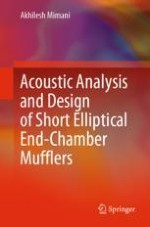2021 | OriginalPaper | Chapter
2. Acoustic Wave Propagation in an Elliptical Cylindrical Waveguide
Author : Akhilesh Mimani, PhD
Published in: Acoustic Analysis and Design of Short Elliptical End-Chamber Mufflers
Publisher: Springer Singapore
Activate our intelligent search to find suitable subject content or patents.
Select sections of text to find matching patents with Artificial Intelligence. powered by
Select sections of text to find additional relevant content using AI-assisted search. powered by
